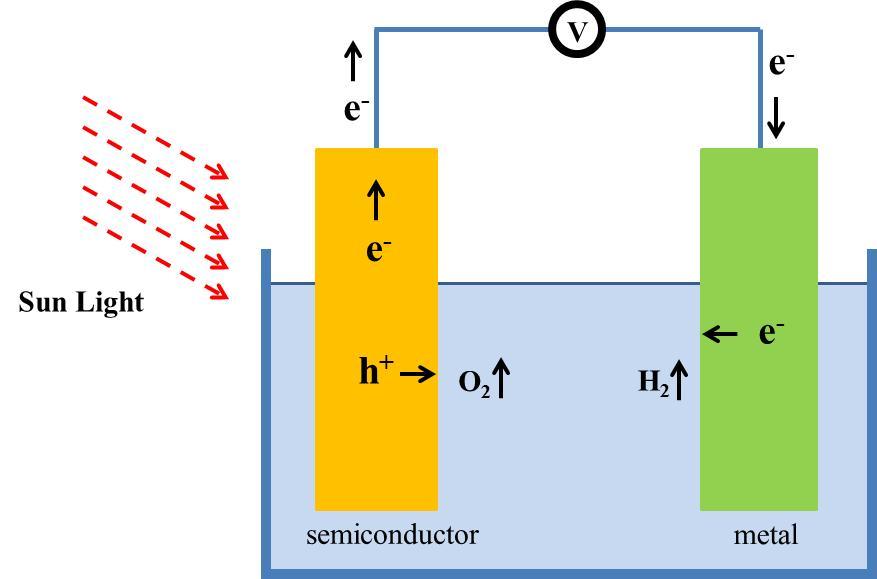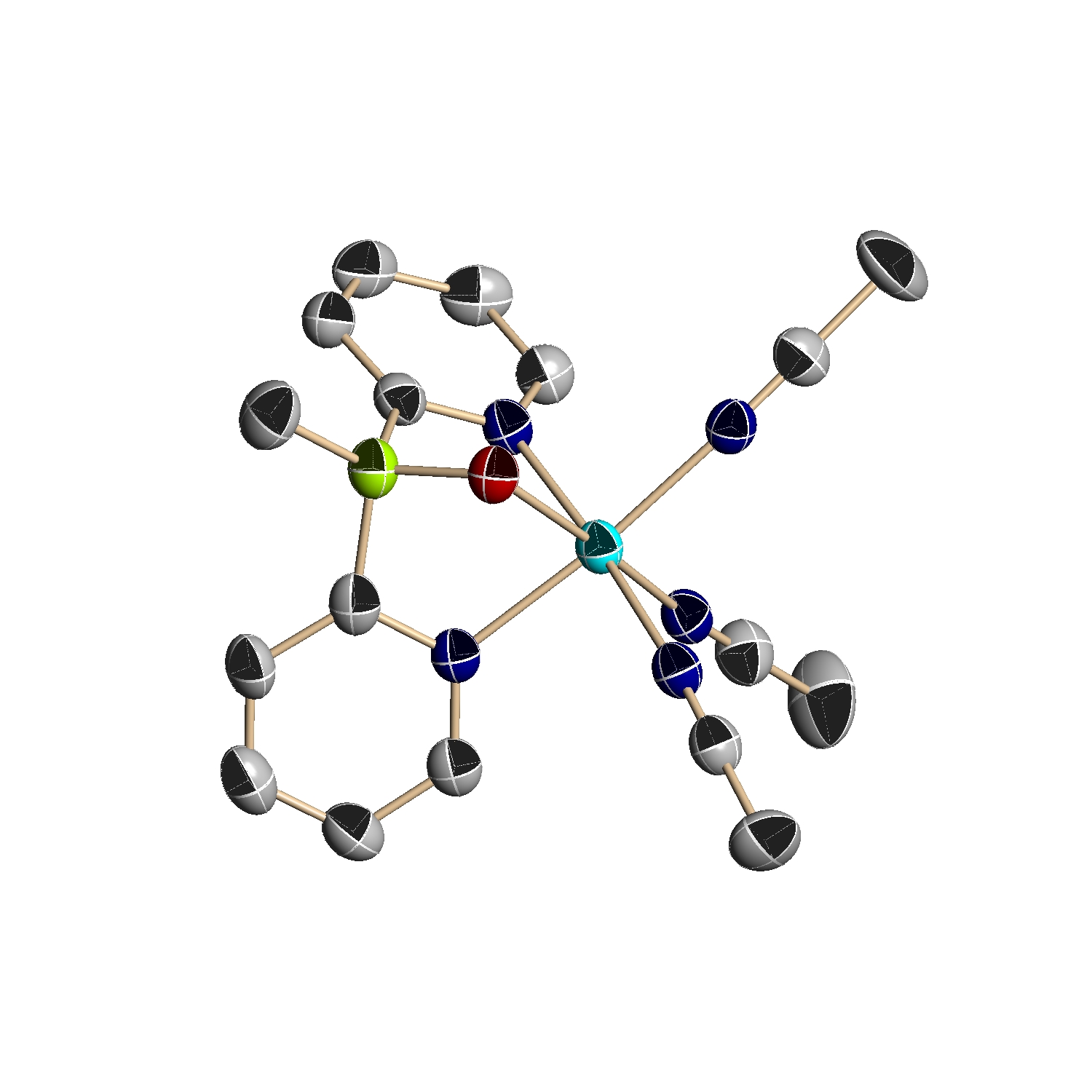Alloy and catalyst allow for low-cost generation of hydrogen from water and air-stable, reusable storage
August 31, 2011

When immersed in water and exposed to sunlight, the PEC alloy splits water molecules into hydrogen and oxygen (credit: University of Kentucky)
Using state-of-the-art theoretical computations, scientists from the University of Kentucky and the University of Louisville have developed an inexpensive semiconductor material can be tweaked to generate hydrogen from water using sunlight.
They demonstrated that an alloy formed by antimony (Sb) and gallium nitride (GaN) has the right electrical properties to enable solar light energy to split water molecules into hydrogen and oxygen, a process known as photoelectrochemical (PEC) water splitting.
The researchers said the GaN-Sb alloy has the potential to convert solar energy into an economical, carbon-free source for hydrogen — a zero-emissions fuel for powering homes and cars.

The USC team created a method to release hydrogen from storage in ammonia borane, a stable solid (credit: USC)
In related news today, scientists from the University of Southern California have developed a ruthenium catalyst system that releases enough hydrogen from its storage in ammonia borane to make it usable as a fuel source.
The system is air-stable and reusable, unlike other systems for hydrogen storage on boron and metal hydrides. This is the first reusable, air stable ammonia borane dehydrogenation process, the researchers said.
The system is sufficiently lightweight and efficient to have potential fuel applications ranging from motor-driven cycles to small aircraft, they said.
Ref.: Brian L. Conley, Denver Guess, Travis J. Williams, A Robust, Air-Stable, Reusable Ruthenium Catalyst for Dehydrogenation of Ammonia Borane, Journal of the American Chemical Society, 2011; 110818113439060 [DOI: 10.1021/ja2058154]
Ref.: R. Sheetz, et al., Visible-light absorption and large band-gap bowing of GaN_{1−x}Sb_{x} from first principles, Physical Review B, 2011; 84 (7) [DOI: 10.1103/PhysRevB.84.075304]